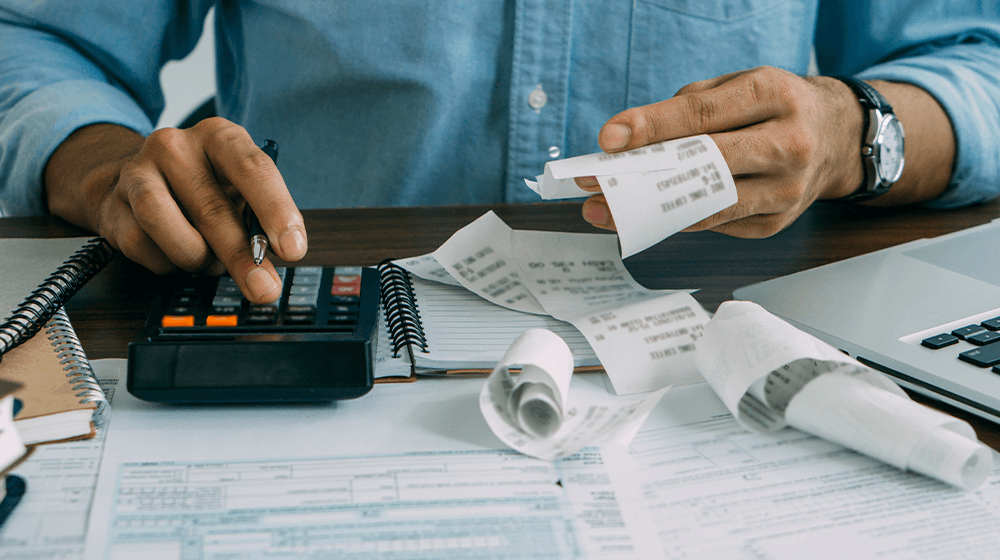Companies bear the expenses of their day-to-day operations, expansion and production of the goods they offer. Calculating these costs helps to measure profits and total revenue and prepare the income statement to analyze the company's growth. Understanding the expenses can help you examine the brand business model and explain how it makes a profit. In this article, we will explain what kinds of expenses in commercial and industrial companies, read on.
Concept of expenses
The expenses summarize the costs incurred by a company or brand to generate revenue. Companies may spend money on operations, taxes and other activities to operate the business. You can record these expenses in the income statement, help calculate gross income and determine the company's financial planning. For example, you can subtract the expenses from the revenues to calculate gross income.

Types of expenses
You can classify expenses into different categories for systematic recording in the company's financial statements. Below are the four types of expenses that occur at work:
Fixed Account
Fixed expenses are the cost that may not change with increased business activity, such as sales and production in the company, also classified by companies as a general or indirect cost, these expenses remain constant for a period, are recurrent and include expenses such as leases and property tax.
Variable Account
The expenses of companies that change together with the number of goods and services produced by the company are variable expenses, increasing as production and manufacturing increase and decrease as production decreases in the company, these expenses include sales commission, raw materials and labor costs.
Operating expenses
Companies incur operating expenses during normal business operations related to production or service provision, such expenses may be necessary for the company's day-to-day activities, and may include expenses such as payroll, marketing, equipment and research and development.
Non-operational expenses
Non-operational expenses exclude all of the company's core operations, and these costs are incurred by companies to meet certain commercial cash liabilities for debt and asset disposal. Some examples of non-operating expenses include inventory reduction, litigation, restructuring costs and any kind of one-time fee.
Examples of commercial and industrial expenses
Most businesses typically require investment to generate revenue, the company's expense category can vary depending on industry and business type, the manufacturer may spend money to buy raw materials, while the technology company may use its investments in research and development, here are examples of expenses that companies may incur:
Salary costs
One of the largest expenses a company may incur is compensation for its employees, these costs include salaries, payroll taxes and other liabilities to employees, few companies may pay project bonuses along with employee benefits such as housing and transportation facilities.
Companies can benefit from a robust pay system that compensates employees for their hard work and contribution to the company, making employees feel more valuable in their workplace.
Rental payments
Most companies operate in leased office space, some companies may own real estate, But many do not have it because of property insurance and other liabilities. sometimes it is cheaper for a company to rent a place rather than buy one, Rent comes within fixed expenses and may vary depending on the company's location office space in larger cities is usually more expensive than in smaller cities.
Cost of goods sold (COGS)
These expenses include the direct cost of producing a product or service for the company, for example, construction work needs bricks, iron, cement and other heavy machinery for infrastructure, while an e-commerce company may require advanced technical tools and significant inventory to provide its services, organizations deduct the cost of goods sold from sales to measure the profit margin on each product.
The cost of sold goods (COGS) may not measure the final cost incurred when selling a product, for example, a car manufacturer may only consider the cost of labour, machinery and tools to calculate the cost of goods sold, and may exclude the cost of transporting vehicles to the agency and the labour required to market and sell the product.
Publicity and Marketing
Companies classify expenses associated with the promotion of the Company's products and services as advertising and marketing expenses, usually spent by brands on customer access, also known as customer acquisition cost. These expenses include marketing campaigns paid on digital and print media or running ads on television, which you can report in the administrative, general and sales expenses section of the Company's income statement.
Taxes
There are many taxes that a business typically pays as long as it works, this can include property, income, employment, corporate tax, sales, sometimes, companies may pay taxes to local authorities in the state and taxes imposed by the country's central tax authority, and some companies may pay more taxes than others based on the industry to which they belong.
Consumption
Consumer expenses are used as a calculation method to distribute the cost of assets over their productive life, depreciation is used for tangible assets, such as buildings or equipment, while depreciation is used for intangible assets such as patents or copyright.
Consumer expenses are calculated by dividing the asset's cost by its estimated productive life. This method allows companies to bear a portion of the asset's cost each year rather than paying it at once when they buy it. The aim is to match expenses with revenue so that profits are accurately reflected in the financial statements.
Maintenance and repair
Companies that use the vehicle fleet as part of their operations can deduct the part used for the business, deductible expenses include parking and gas fees. Otherwise, you can choose to use the standard mileage rate. In addition, repair and maintenance of other kinds of equipment and machines used in your business can also be calculated.
Within the actual vehicle expense calculations, you can include gas, oil, repairs, tires, registration fees, licenses and depreciation (or rent payments) in proportion to the total work mileage.
Travel
Business-related travel expenses include flights, hotels and meals - but note that only 50% of the cost of meals for employees and customers is deductible, as are the costs of candidates travelling for a discountable interview, and examples include parking fees and flights.
Conclusion:
Business expenses are the costs of running the company and making sales, and as long as the expenses are "normal and necessary" to run the business in your business, they are deductible, this makes it worth spending time to organize your spending so that your business takes all legitimate write-offs, develops an effective financial plan, and you will not need to make much effort in auditing.
Important Topics
Reference
1. << What is cash management and how to maintain it >>, economictimes
2. << How To Streamline Cash Management Through Automation And Digitisation? Know Here>>, abplive

Add New Comment